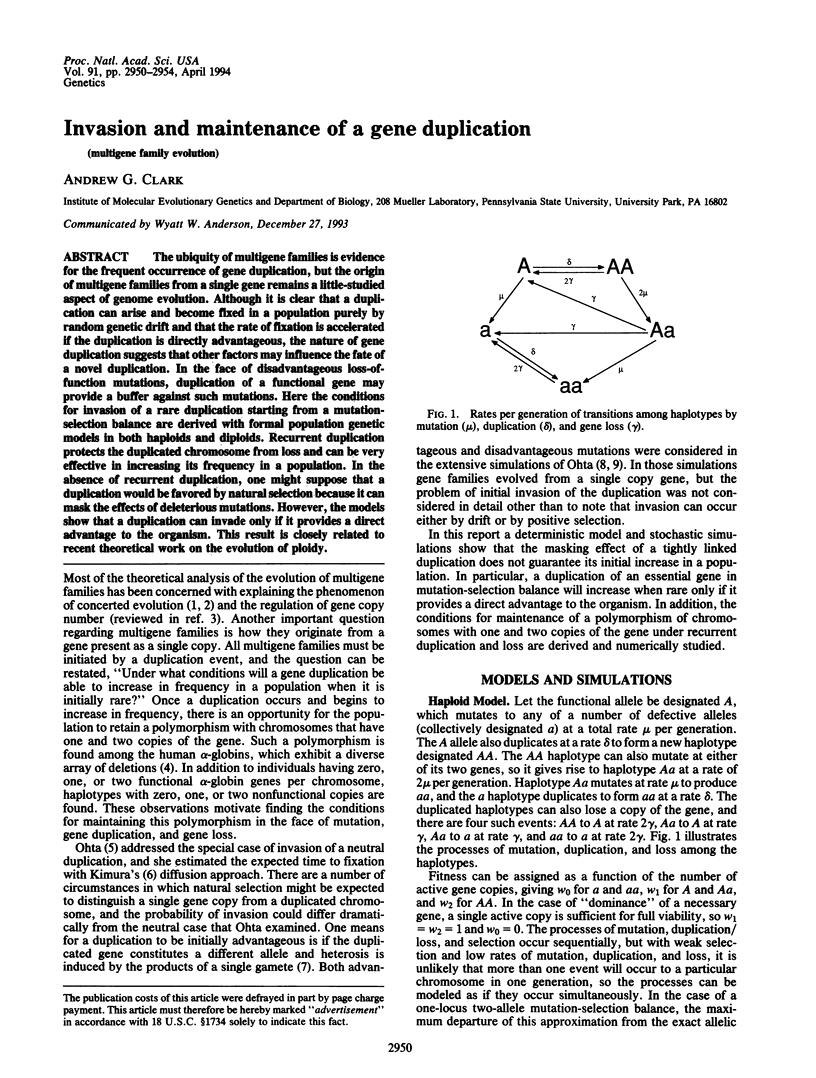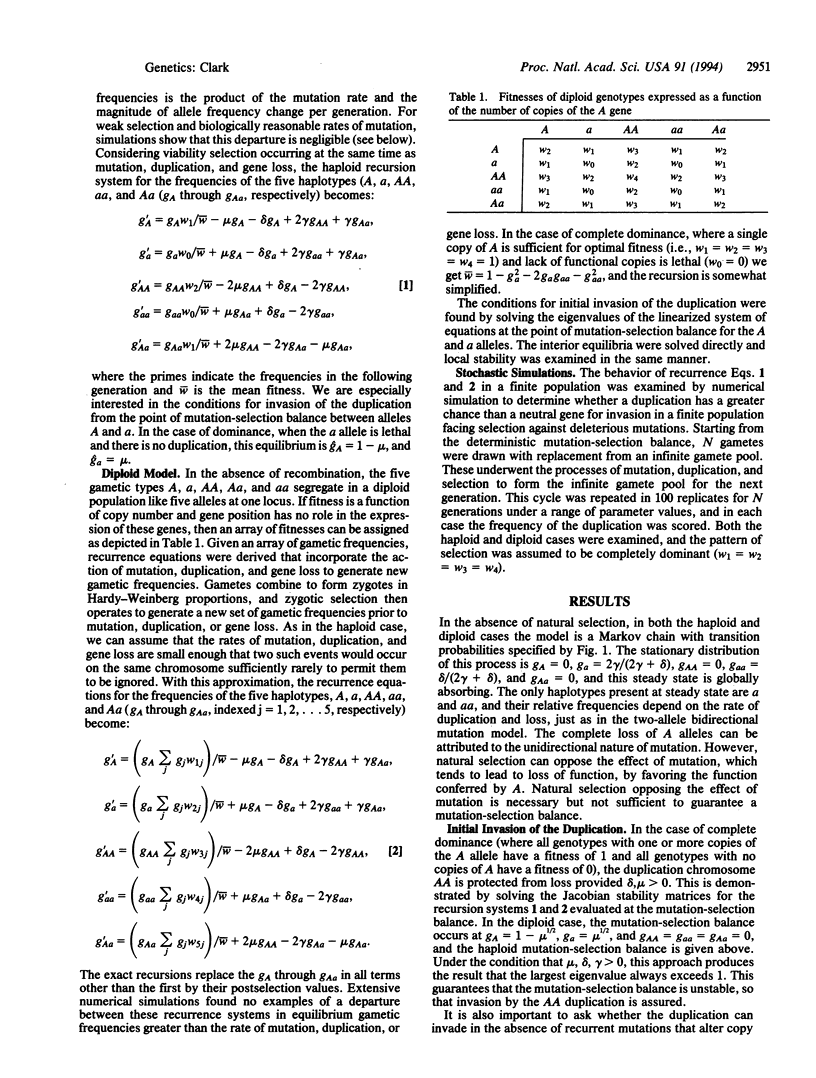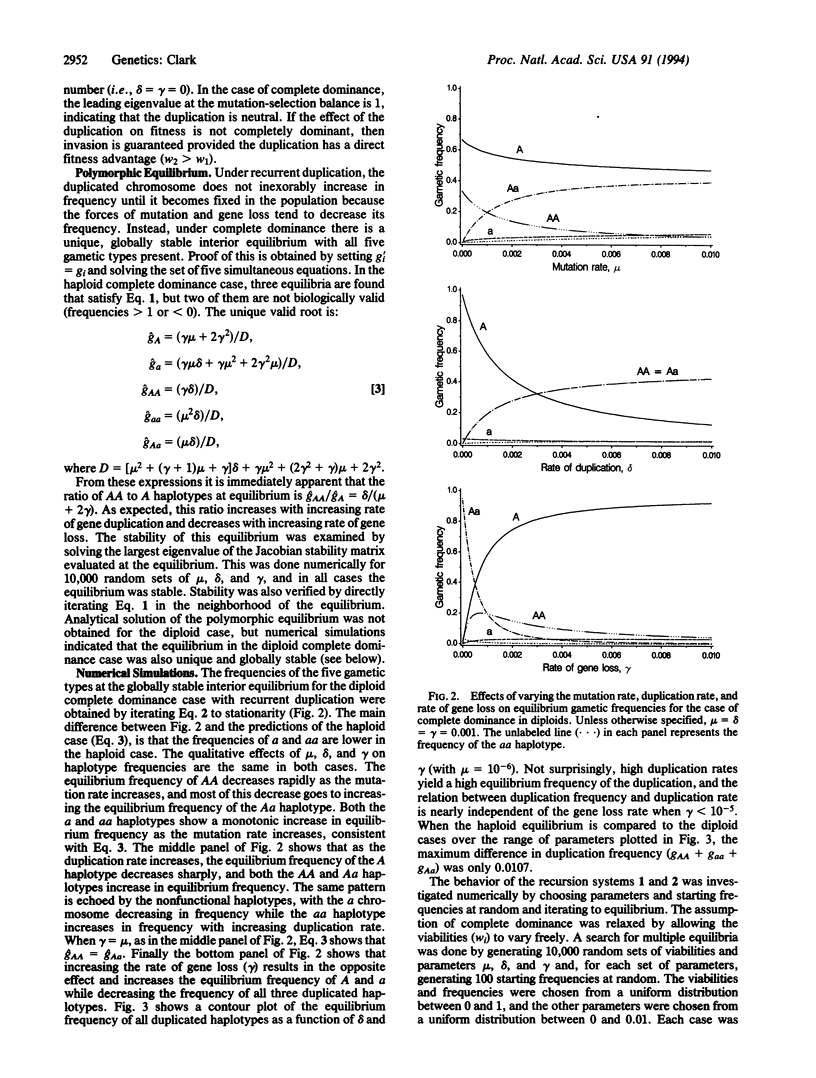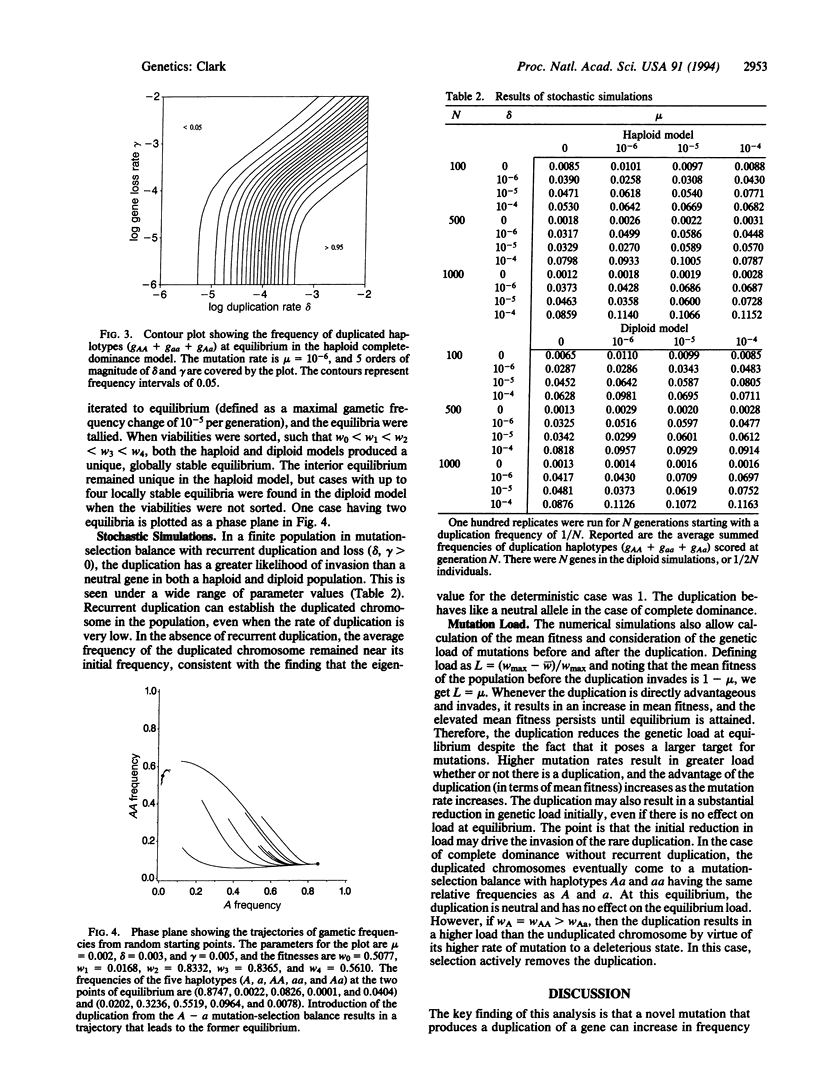Abstract
The ubiquity of multigene families is evidence for the frequent occurrence of gene duplication, but the origin of multigene families from a single gene remains a little-studied aspect of genome evolution. Although it is clear that a duplication can arise and become fixed in a population purely by random genetic drift and that the rate of fixation is accelerated if the duplication is directly advantageous, the nature of gene duplication suggests that other factors may influence the fate of a novel duplication. In the face of disadvantageous loss-of-function mutations, duplication of a functional gene may provide a buffer against such mutations. Here the conditions for invasion of a rare duplication starting from a mutation-selection balance are derived with formal population genetic models in both haploids and diploids. Recurrent duplication protects the duplicated chromosome from loss and can be very effective in increasing its frequency in a population. In the absence of recurrent duplication, one might suppose that a duplication would be favored by natural selection because it can mask the effects of deleterious mutations. However, the models show that a duplication can invade only if it provides a direct advantage to the organism. This result is closely related to recent theoretical work on the evolution of ploidy.
Full text
PDF




Selected References
These references are in PubMed. This may not be the complete list of references from this article.
- Albitar M., Katsumata M., Liebhaber S. A. Human alpha-globin genes demonstrate autonomous developmental regulation in transgenic mice. Mol Cell Biol. 1991 Jul;11(7):3786–3794. doi: 10.1128/mcb.11.7.3786. [DOI] [PMC free article] [PubMed] [Google Scholar]
- Bengtsson B. O. Deleterious mutations and the origin of the meiotic ploidy cycle. Genetics. 1992 Jul;131(3):741–744. doi: 10.1093/genetics/131.3.741. [DOI] [PMC free article] [PubMed] [Google Scholar]
- Enver T., Raich N., Ebens A. J., Papayannopoulou T., Costantini F., Stamatoyannopoulos G. Developmental regulation of human fetal-to-adult globin gene switching in transgenic mice. Nature. 1990 Mar 22;344(6264):309–313. doi: 10.1038/344309a0. [DOI] [PubMed] [Google Scholar]
- Goossens M., Dozy A. M., Embury S. H., Zachariades Z., Hadjiminas M. G., Stamatoyannopoulos G., Kan Y. W. Triplicated alpha-globin loci in humans. Proc Natl Acad Sci U S A. 1980 Jan;77(1):518–521. doi: 10.1073/pnas.77.1.518. [DOI] [PMC free article] [PubMed] [Google Scholar]
- Higgs D. R., Wood W. G., Jarman A. P., Vickers M. A., Wilkie A. O., Lamb J., Vyas P., Bennett J. P. The alpha-thalassemias. Ann N Y Acad Sci. 1990;612:15–22. doi: 10.1111/j.1749-6632.1990.tb24286.x. [DOI] [PubMed] [Google Scholar]
- Kimura M. Average time until fixation of a mutant allele in a finite population under continued mutation pressure: Studies by analytical, numerical, and pseudo-sampling methods. Proc Natl Acad Sci U S A. 1980 Jan;77(1):522–526. doi: 10.1073/pnas.77.1.522. [DOI] [PMC free article] [PubMed] [Google Scholar]
- Kondrashov A. S., Crow J. F. Haploidy or diploidy: which is better? Nature. 1991 May 23;351(6324):314–315. doi: 10.1038/351314a0. [DOI] [PubMed] [Google Scholar]
- Nagylaki T. The evolution of multigene families under intrachromosomal gene conversion. Genetics. 1984 Mar;106(3):529–548. doi: 10.1093/genetics/106.3.529. [DOI] [PMC free article] [PubMed] [Google Scholar]
- Ohta T. How gene families evolve. Theor Popul Biol. 1990 Feb;37(1):213–219. doi: 10.1016/0040-5809(90)90036-u. [DOI] [PubMed] [Google Scholar]
- Ohta T. On the evolution of multigene families. Theor Popul Biol. 1983 Apr;23(2):216–240. doi: 10.1016/0040-5809(83)90015-1. [DOI] [PubMed] [Google Scholar]
- Ohta T. Simulating evolution by gene duplication. Genetics. 1987 Jan;115(1):207–213. doi: 10.1093/genetics/115.1.207. [DOI] [PMC free article] [PubMed] [Google Scholar]
- Ohta T. The mutational load of a multigene family with uniform members. Genet Res. 1989 Apr;53(2):141–145. doi: 10.1017/s0016672300028020. [DOI] [PubMed] [Google Scholar]
- Ohta T. Time for acquiring a new gene by duplication. Proc Natl Acad Sci U S A. 1988 May;85(10):3509–3512. doi: 10.1073/pnas.85.10.3509. [DOI] [PMC free article] [PubMed] [Google Scholar]
- Otto S. P., Goldstein D. B. Recombination and the evolution of diploidy. Genetics. 1992 Jul;131(3):745–751. doi: 10.1093/genetics/131.3.745. [DOI] [PMC free article] [PubMed] [Google Scholar]
- Perrot V., Richerd S., Valéro M. Transition from haploidy to diploidy. Nature. 1991 May 23;351(6324):315–317. doi: 10.1038/351315a0. [DOI] [PubMed] [Google Scholar]


